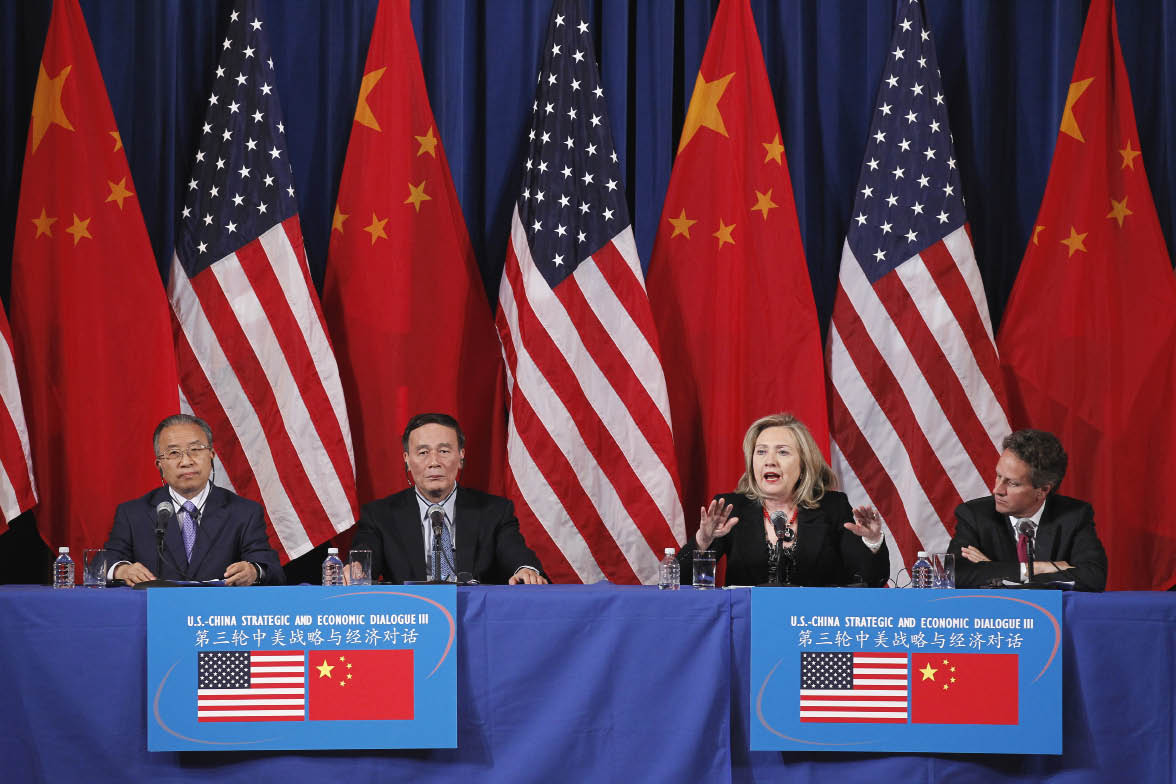| Yes We Can
China-U.S. Relations in the Past and into the Future
By DIAO DAMING
CHINA-U.S. relations have gone through a number of twists and turns over the last 40 years to arrive where they are today.
A good metaphor for these relations is a powerful river. In spite of the submerged obstacles of trade disputes, human rights differences, military suspicions and the Taiwan issue poking up above the surface every now and then to stymie the flow of the river and create eddies, the torrent's flow is unaffected on its course. As the river rolls onward toward the sea it is bound to grow calmer and its current stronger before eventually opening out into an ocean of understanding. It should all be smooth sailing in the end.
In our times of drastic change in global political and economic structures, the development of China-U.S. relations is followed closely as a harbinger of the future world geopolitical landscape. Decision-makers on both sides of the Pacific need to take prudent and pragmatic attitudes in their dealings with the other party – these dealings will shape what is arguably the most important bilateral relationship of the 21st century.
|
 |
|
From left, China's State Councilor Dai Bingguo, Vice Premier Wang Qishan, U.S. Secretary of State Hillary Rodham Clinton and Treasury Secretary Timothy Geithner at a joint meeting of the U.S.-China Strategic and Economic Dialogue on May 10, 2011, at the Interior Department in Washington. Photo by CFP |
Enter the Diplomats
On February 21, 1972 after a particularly late Spring Festival, U.S. President Richard Nixon arrived in Beijing and was greeted by Premier Zhou Enlai at the capital's airport. Shaking hands with Nixon, Zhou remarked, "Your hand has come over the vastest ocean in the world to shake mine – 25 years of non-communication is a long time." The historic visit marked the beginning of a new era, as Nixon later wrote in his Memoirs. A week after Nixon's arrival, on February 28, the two sides released the China-U.S. Joint Communiqué in Shanghai, in which they gave an account of their respective positions on major international issues.
While highlighting essential differences in their stances with regards to social systems and foreign policies, the two sides agreed to develop relations guided by Five Principles of Peaceful Coexistence: respect for the sovereignty and territorial integrity of all states, non-aggression against other states, non-interference in the internal affairs of other states, equality and mutual benefits and peaceful coexistence. The two sides agreed to maintain inter-governmental contact through various channels, including via the sending of a senior US representative to Beijing from time to time to aid in further normalizing relations between the two countries and to continue to exchange views on issues of common interest.
In Shanghai, the two sides expressed the hope that the gains achieved during Nixon's visit would start a new page in bilateral relations. Chinese and American diplomats stressed the normalization of relations between the two countries was not only in the interest of the Chinese and American peoples but also contributed to the relaxation of tensions in Asia and the broader world.
Nixon's ice-breaking trip went down in the histories of both countries as a landmark event in China-U.S. relations. As China-U.S. relations were warming up, a triangular diplomatic tangle between the U.S., China and the Soviet Union was forming. Relations between these countries were to play an important role in regional and global diplomacy for the next few decades.
Reconciliation between the U.S. and China compelled the USSR to similarly ease tensions with the U.S. and Western Europe and also propelled Japan to establish diplomatic relations with China. The two East Asian nations officially normalized relations in September 1972. Nixon's seven-day visit to China really was "the week that changed the world", as the U.S. President put it in his parting toast in Shanghai.
| 